Marine EM Studies Offshore Uruguay
Steven Constable
We are conducting a 30 day cruise on the research vessel Ocean
Stalwart,
to carry out marine EM studies offshore Uruguay. Our goal is to study the geological structure of the continental margin and
collect data that will help design future geophysical programs in this very new exploration area. For once we are doing marine EM before
the 3D siesmics has been finished.
Our work has been mentioned in dispatches in the San Diego Daily Transcript.
Steve's daily Log from
the R.V. Ocean Stalwart
Final Cruise Report (24 Mb).
All photos
are copyright Steven Constable, unless noted
otherwise.
February 6. All you green flash skeptics out there need to spend a month on a ship in equatorial waters. Not that we're in equatorial
waters, and this "flash" is pretty marginal, but several good ones were sighted this cruise. Sayonara - we're all done and on our
way home. See you next time.

Crystal the cook was aghast that we didn't have a group cruise photo on the back deck. Not a big custom for
our group, and the back deck is not a pretty sight right now, with welders torching off all our tie-downs. So here we are in the
rain about to leave for the hotel.

February 3. The level wind on the winch is a little old and worn, and prone to jumping. During the epic seismic ship avoidance
turn on the 20th, the level wind jumped but we had no time to fix it, since we were pulling in as fast as possible, and once you make a mess
of a wrap it propages up (left picture). We had a little time at the end of the cruise to pay the wire out and fix the problem (right).
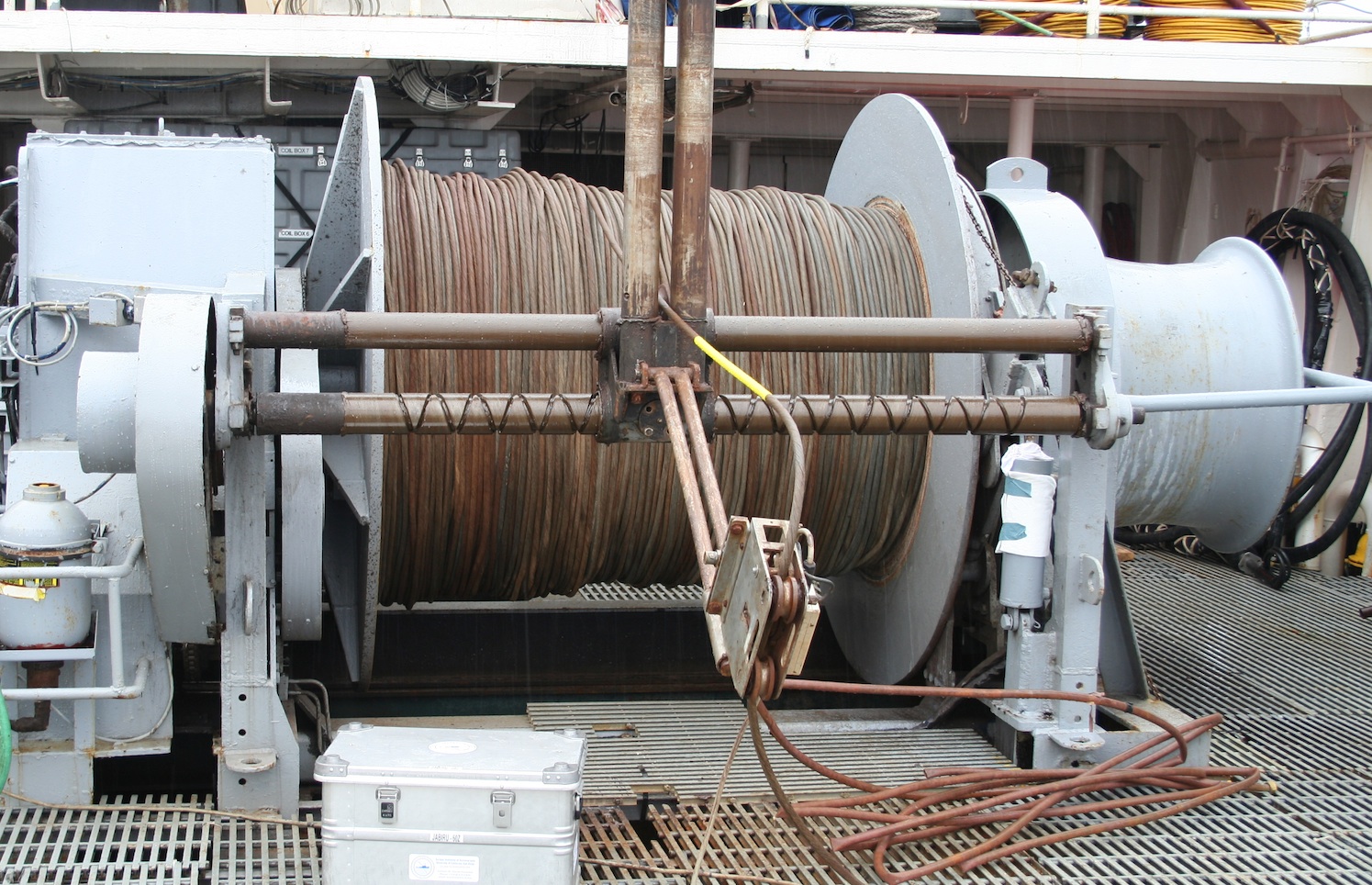 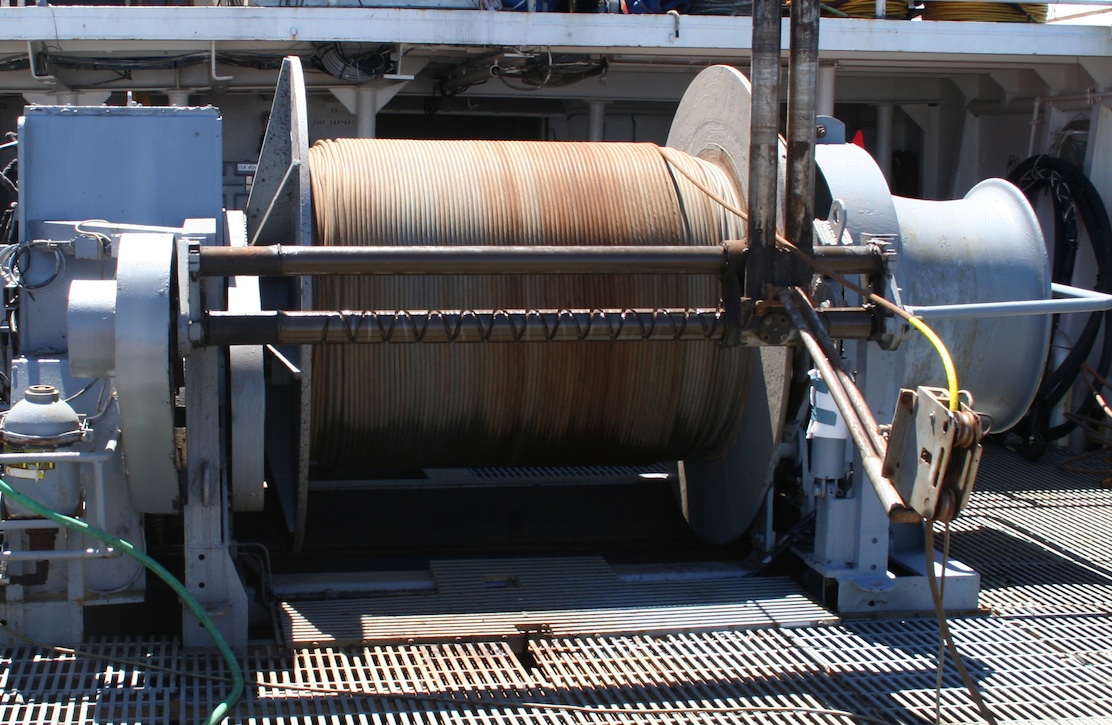
February 1. We haven't seen much sea life this trip - the odd turtle here and there. But when we were towing SUESI we attracted
a cadre of albatross. The one on the right must think we were fishing for awfully big game with a rig as big as that.
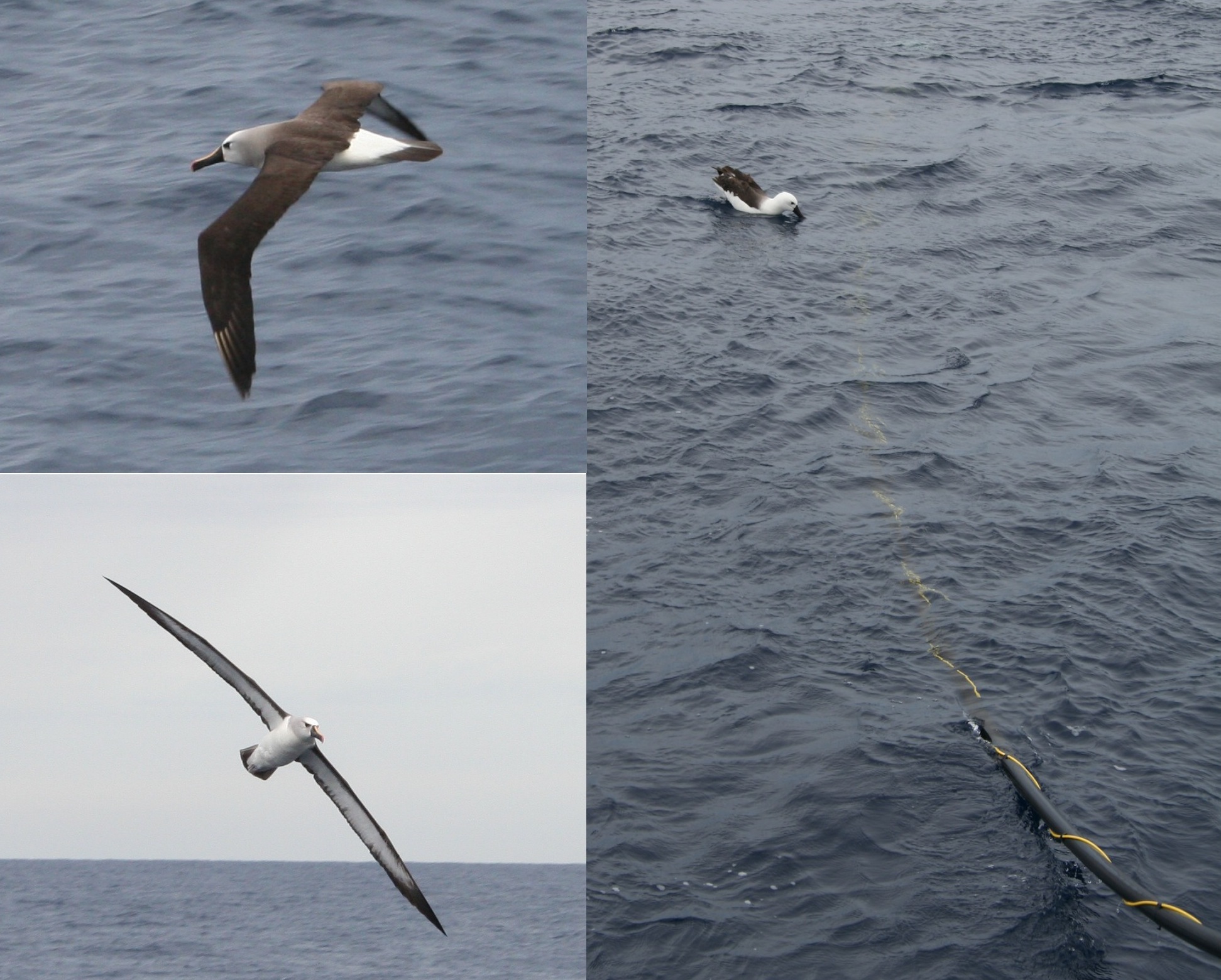
January 31. These last few days have been in the "boring is good" category. Moving MT sites, and now a run up a line with SUESI and the
Vulcan. This is Dallas working hard for her Ph.D. data.
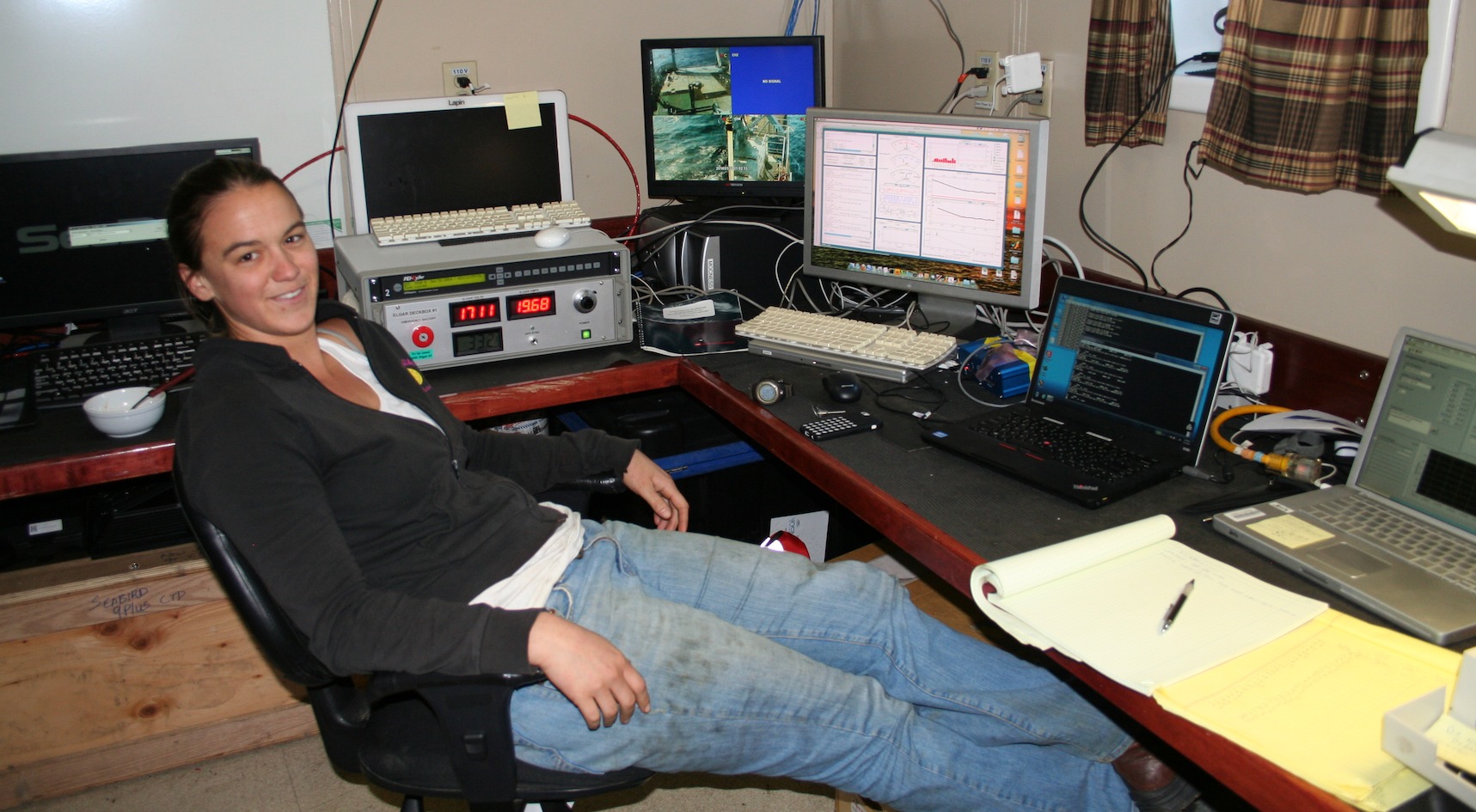
January 26. Today the crew used one of our instruments for a man-overboard drill. If I am ever to go overboard,
I just hope it is in water this calm with an orange flag and a GPS locator beacon with me.

January 24. More GoPro magic from Chris Armerding - a movie of a recovery from a grapnel and crane perspective.
Recovery Movie (Quicktime, 6.4 Mb)

January 23. Speaking of grapnels, this is what it is like to be one. The wonders of the GoPro. Photo and grapnel toss courtesy Chris Armerding.
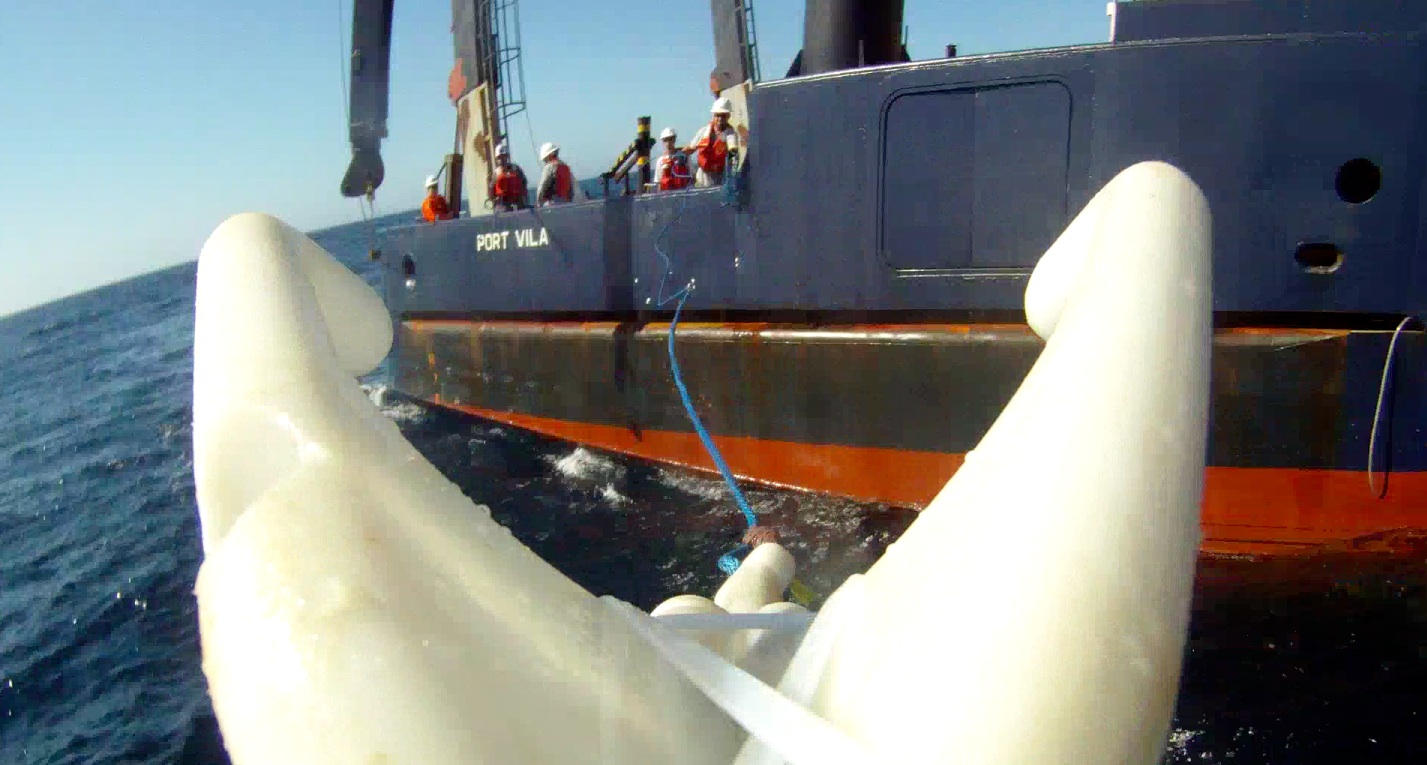
January 19. The sunsets have been just spectacular these last few days.


January 17. Recovering the last instrument of the day.
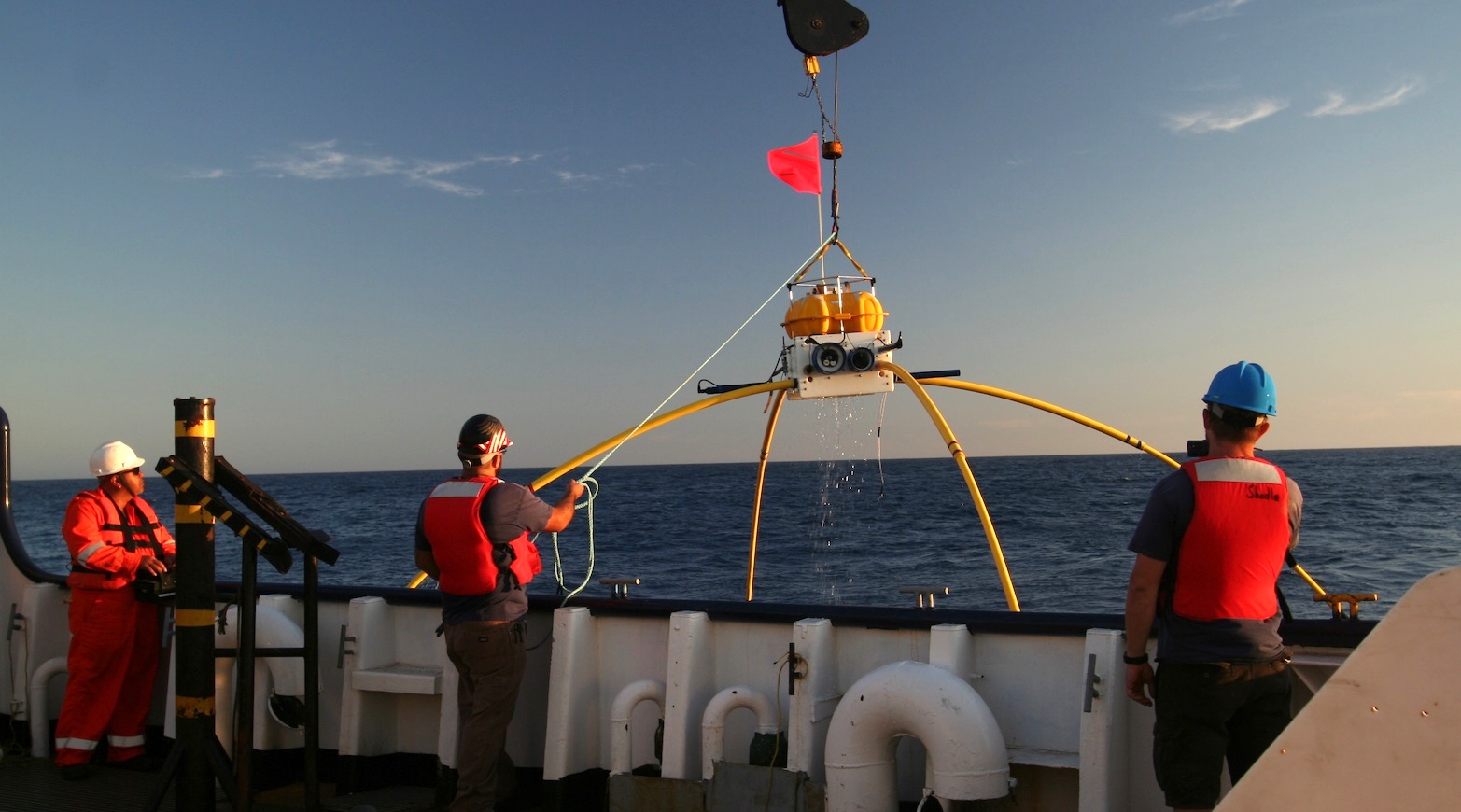
January 17. There are good grapnel tosses, and not so good ones. This is a good one.
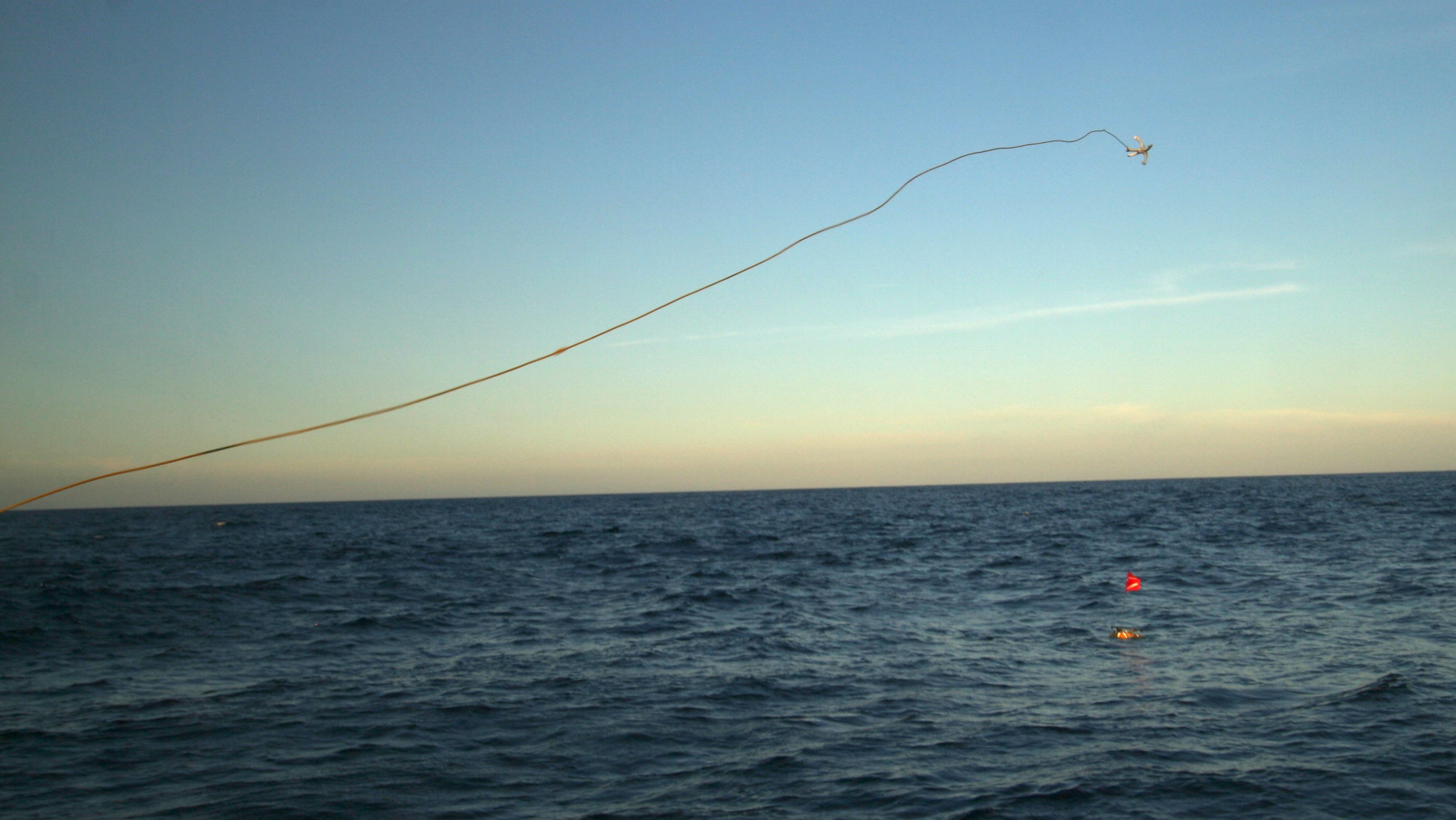
January 16. This is not a pretty sight. 250 m of 2" antenna cable hauled in by hand and crane. At least our winch is working now,
so we can recover it properly next time. Fingers crossed ...

January 16. This man is our hero! He saved our bacon. When we came to recover SUESI so we could pick up Roo our antenna winch failed and we had to pull
the antenna in by hand. Meanwhile, Chief Engineer Julio pulled apart the controller system of our winch and made it work again.
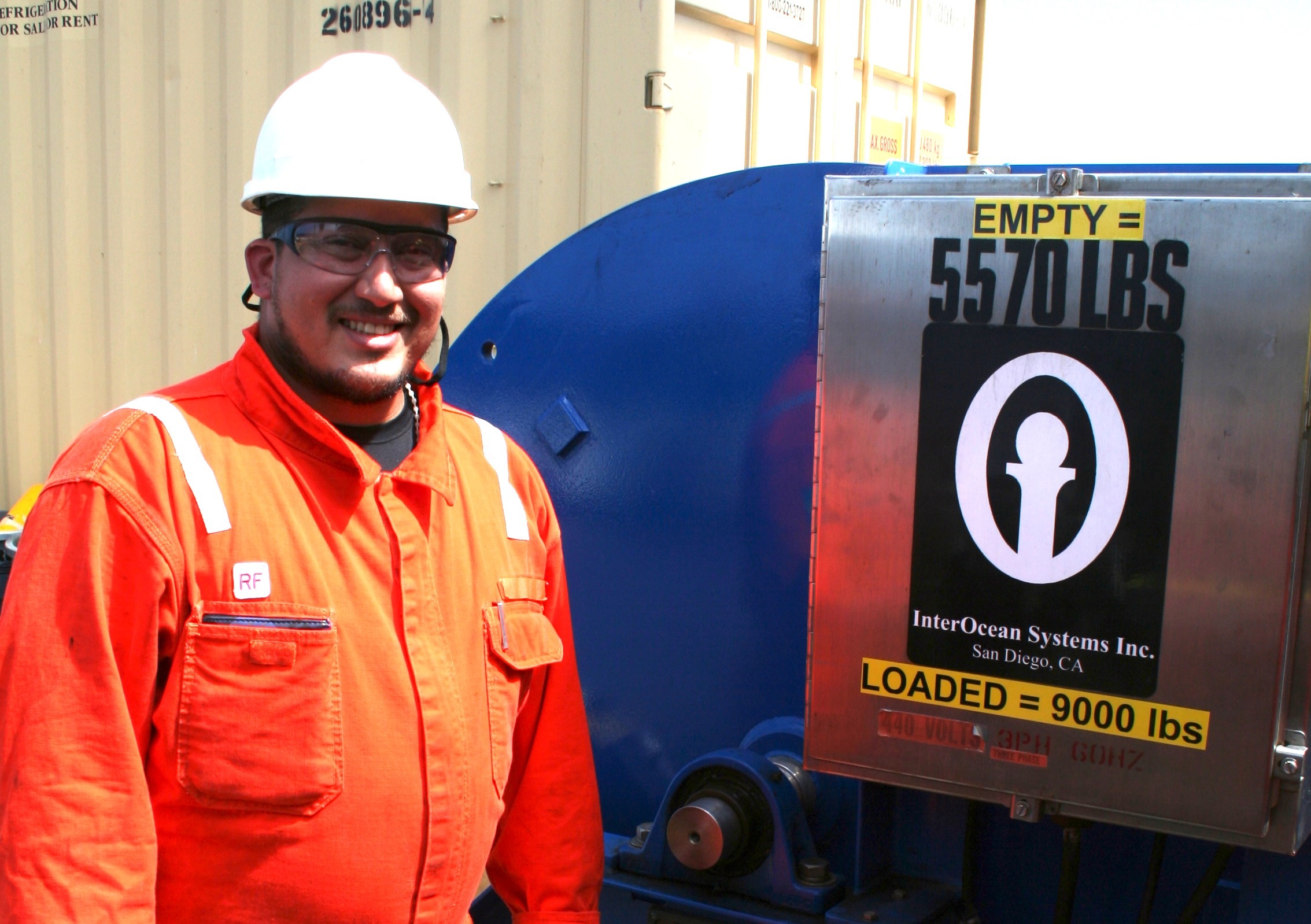
January 16. I should not have deployed this instrument (Roo). There was a glitch during the acoustic release checkout but it seemed OK after that,
so I said go ahead. We watched it down through the water column for a while to be sure. But it "bounced" all the same. This instrument was
at the end of our line, and drifted 150 km over 3 days to within 800 m of the vessel during our SUESI tow. The odds of that are vanishingly small ...
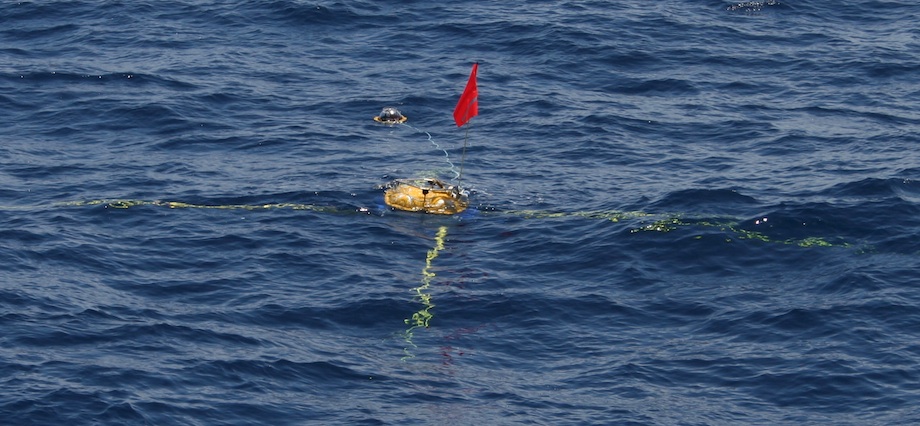
January 13, the usual gratuitous photo of SUESI being deployed. (Dear sponsor - if you look carefully you will see that the
stern lines are up.)
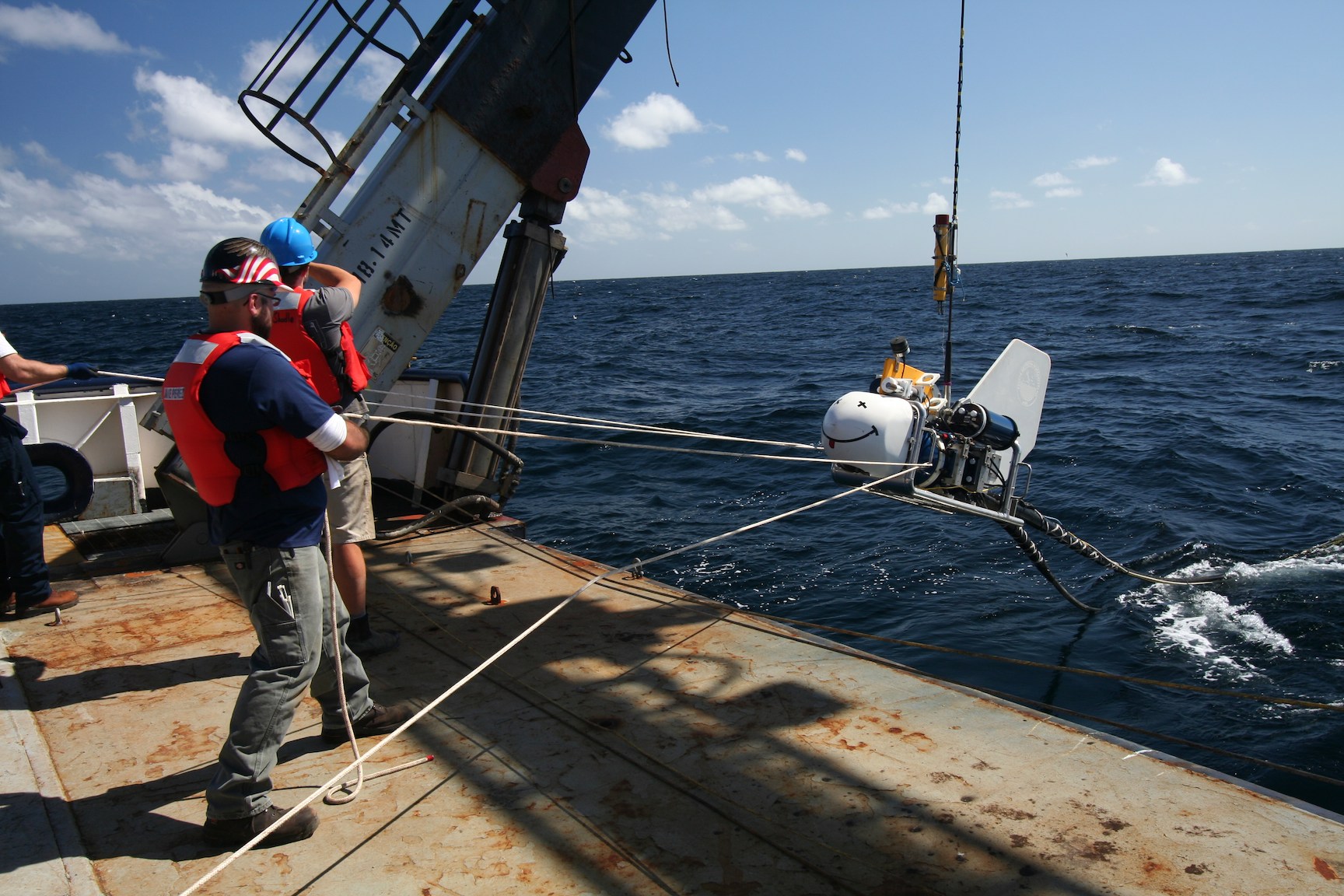
January 9, transit to station. This is time to get ready for work; here's our first instrument waiting for tomorrow's
deployment.
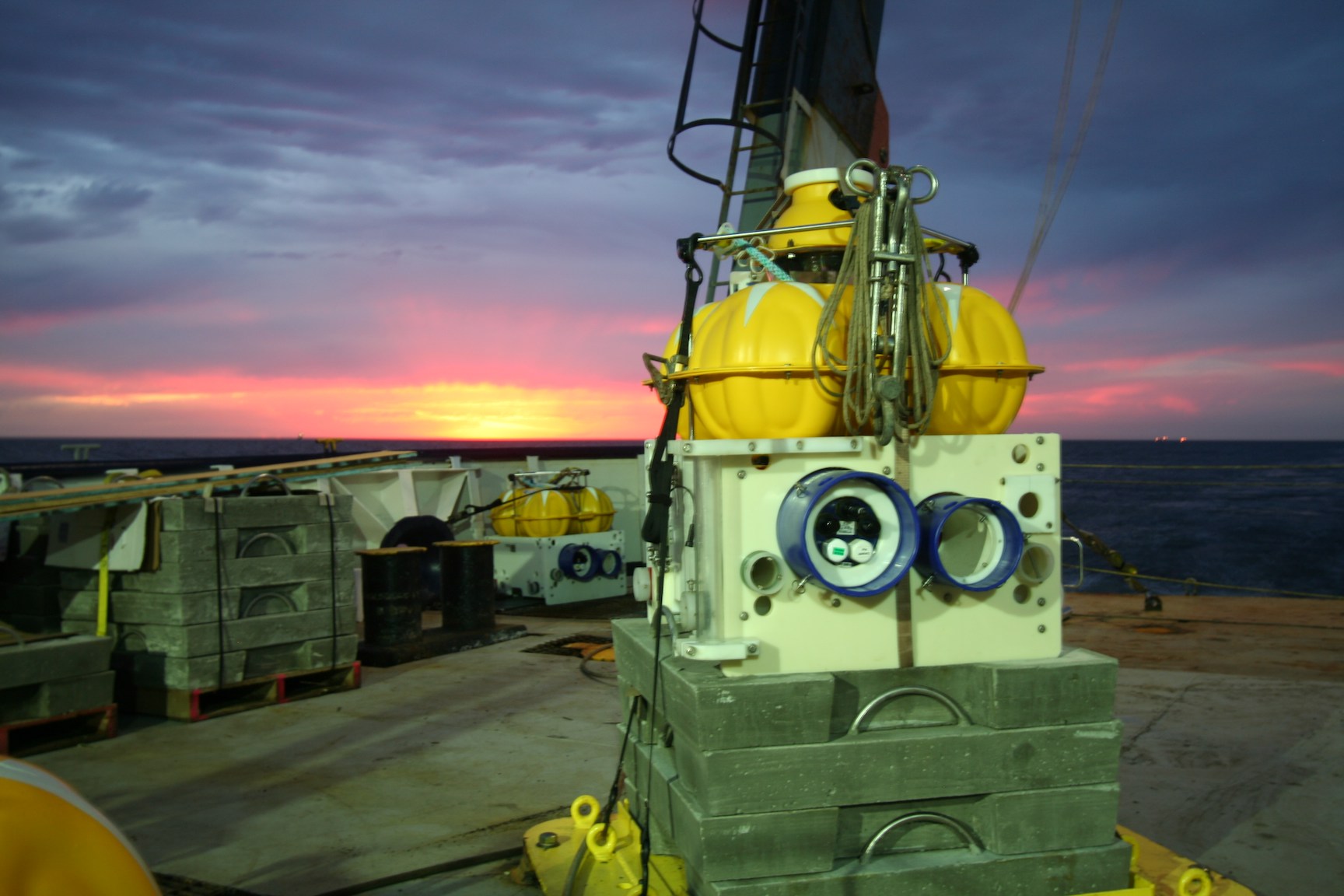
January 9, sailing at last.
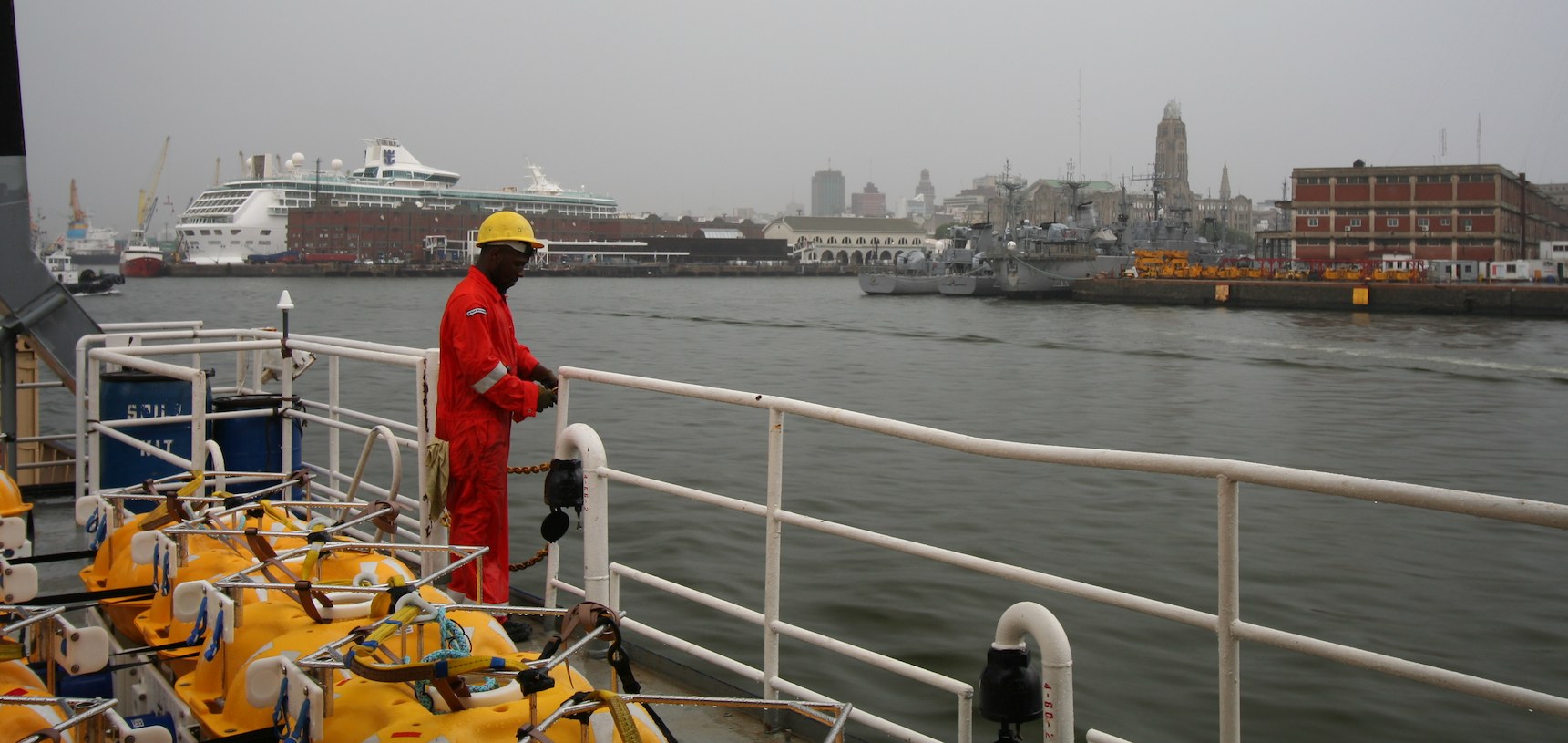
January 8, loading at last. A typical scene on a mobilization day. Craning SUESI aboard just after fork-lifting it out of
a shipping container.

January 7, finally tied up at the pier. The good ship R/V Ocean Stalwart. Normally we show pictures from the front, because the bow looks
impressive, but this is the end of the vessel we care about. In case you are wondering, Port Vila is the
capital of Vanuatu, a country known for flags of convenience.

Location of the research area (maps courtesy ANCAP):

|